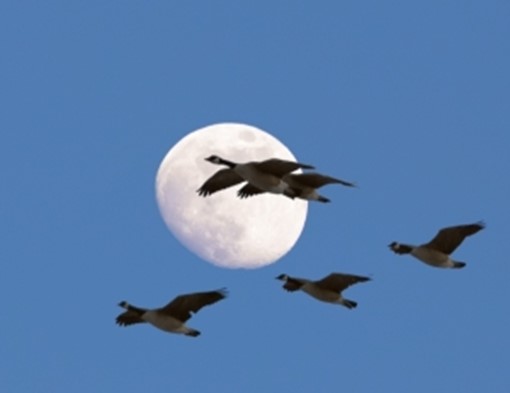

21/12/2020
For billions of years, all life has relied on Earth’s predictable rhythm of day and night. It’s encoded in the DNA of all plants and animals. Humans have radically disrupted this cycle by lighting up the night. Plants and animals depend on Earth’s daily cycle of light and dark rhythm to govern life-sustaining behaviors such as reproduction, nourishment, sleep and protection from predators.
Scientific evidence suggests that artificial light at night has negative and deadly effects on many creatures including amphibians, birds, mammals, insects and plants.
Light pollution is a driver of insect declines
A recent study says habitat loss, pesticide use, invasive species and climate change have all played a role in insect declines globally, but that artificial light at night is another important but often overlooked cause. The light affects insect movement, foraging, reproduction and predation, says the study which, however, suggests that insect biodiversity loss can be mitigated with better informed lighting practices.
Artificial Lights Can Lead Baby Sea turtles to their Demise
Sea turtles live in the ocean but hatch at night on the beach. Hatchlings find the sea by detecting the bright horizon over the ocean. Artificial lights draw them away from the ocean. In Florida alone, millions of hatchlings die this way every year.
Artificial Lights have Devastating Effects on Many Bird Species

Birds that migrate or hunt at night navigate by moonlight
Birds that migrate or hunt at night navigate by moonlight and starlight. Artificial light can cause them to wander off course and toward the dangerous nighttime landscapes of cities. Every year millions of birds die colliding with needlessly illuminated buildings and towers. Migratory birds depend on cues from properly timed seasonal schedules. Artificial lights can cause them to migrate too early or too late and miss ideal climate conditions for nesting, foraging and other behaviors.
Artificial lights disrupt the world’s ecosystems
Nocturnal animals sleep during the day and are active at night. Light pollution radically alters their nighttime environment by turning night into day. According to scientific researches, for nocturnal animals, the introduction of artificial light probably represents the most drastic change human beings have made to their environment. Predators use light to hunt, and prey species use darkness as cover. Near cities, cloudy skies are now hundreds, or even thousands of times brighter than they were 200 years ago. We are only beginning to learn what a drastic effect this has had on nocturnal ecology.
Glare from artificial lights can also impact wetland habitats that are home to amphibians such as frogs and toads, whose nighttime croaking is part of the breeding ritual. Artificial lights disrupt this nocturnal activity, interfering with reproduction and reducing populations.
Managing the impact of artificial light
With artificial light increasing by around 2% per year globally, light pollution has become a pertinent issue.
At the Convention on Migratory Species of Wild Animals thirteenth meeting of the Conference of Parties (CMS COP13) which took place in Gandhinagar, India from 17 to 22 February 2020, delegates considered the topic for the first time following draft resolutions submitted independently by the European Union and Australia. New proposed guidelines drafted by the Government of Australia provide a framework for assessing and managing the impact of artificial light on susceptible wildlife, including migratory species. For example, they consider wildlife-friendly lighting design and the management of light sources near protected wildlife.
The guidelines recognize the potential of conflicting requirements for wildlife conservation and human safety and the need for a balance between the two.
To prevent harm to migratory species, the guidelines propose a multi-step approach. If artificial light is visible outside, best practice light design should be applied so as not to impact nearby habitats of threatened species. An environmental impact assessment should consider negative effects before artificial light sources are installed.
Đỗ Thủy
(UNEP source)
(Nguồn: Bài đăng trên Tạp chí Môi trường số Chuyên đề Tiếng Anh III/2020)